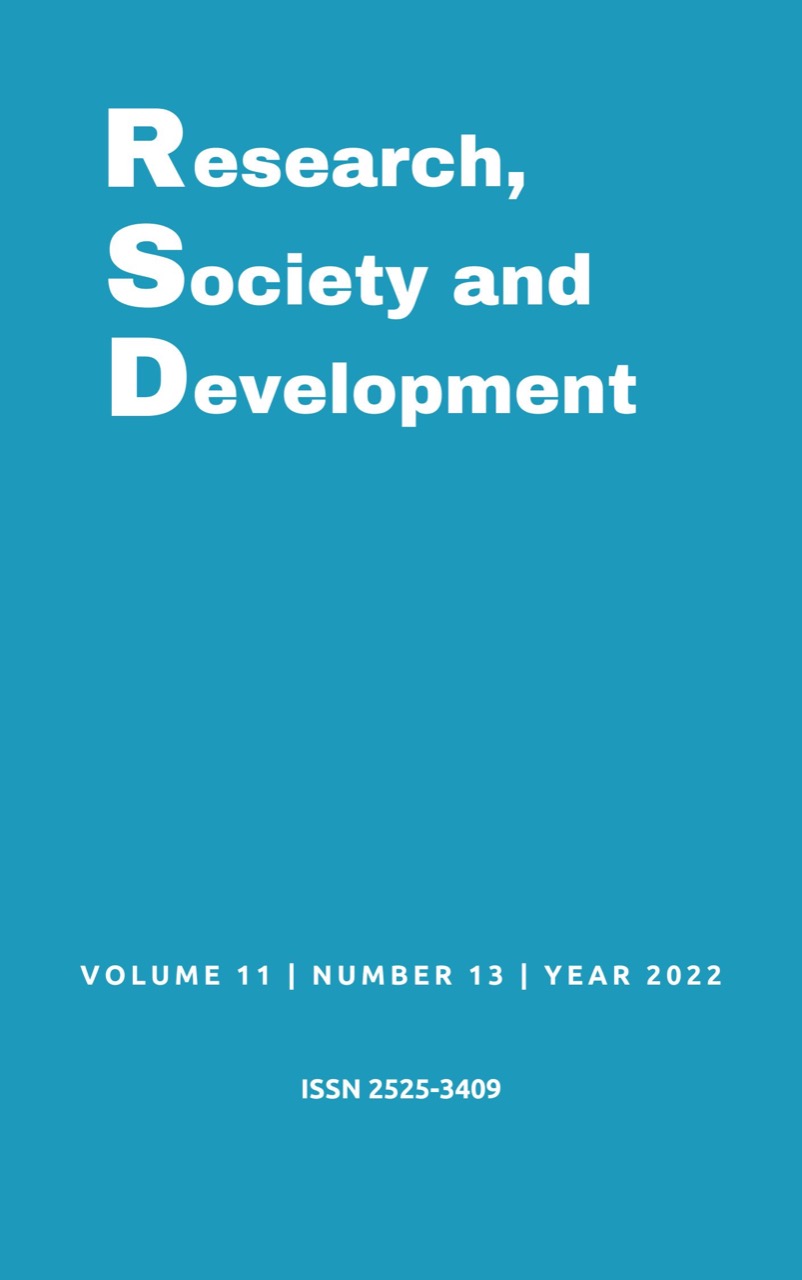The effectiveness of kinesiotherapy in pelvic organ prolapse in women
DOI:
https://doi.org/10.33448/rsd-v11i13.35695Keywords:
Kinesiotherapy; Pelvic strengthening; Pelvic dysfunctions.Abstract
Pelvic organ prolapse (POP) in women is the descent of pelvic organs towards the vaginal canal due to weakness or deficits in the ligaments, fascia and muscles of the pelvic floor. Because POP is a health problem that affects millions of women around the world, pelvic physiotherapy has been assuming an important role, due to its positive result in the treatment of POP and because it is a highly effective resource. Among the therapeutic resources used in POP, there are those that work with the strengthening of the pelvic floor muscles, they are: electrostimulation, Biofeedback, the use of vaginal cones and kinesiotherapy based on Kegel exercises. The main objective of this study is to analyze through the proof of the effectiveness of kinesiotherapy in the treatment of pelvic organ prolapse in women, as it has great relevance in society and in women's health as it is a dysfunction that affects about 40% of women. This study is a literature review, descriptive and exploratory, with a qualitative approach. Its basis for theoretical discussion is scientific articles and other intellectual productions. The inclusion criteria were: articles and intellectual productions published, covering the period from 2015 to 2021. The main physical therapy tool is the performance of exercises for the PFM, which aims to improve the strength of contraction of muscle fibers and resistance of the muscles of the perineal region.
References
Alves, D. B. A. (2018). Impacto do prolapso de órgãos pélvicos na qualidade de vida das mulheres de uma população Brasileira. Universidade Federal do Ceará, Fortaleza – CE.
Araujo, J. E. L et al. (2020). Abordagem fisioterapêutica na reabilitação da musculatura do assoalho pélvico em mulheres com prolapso genital. Fisioter Bras. 21(4):388-95.
Calsavara, M. M et al. (2019). A fisioterapia pélvica na incontinência urinária feminina: Encontro Internacional de produção cientifica. Out./2019.
Cardoso, G. G et al. (2018). Protocolo de exercícios de kegel associado à eletroestimulação no tratamento pós bartolinectomia: um estudo de caso: revista interdisciplinar de promoção da saúde. 1(3).
Coelho, V. M., & Haddad, C. A. S. (2020). Fisioterapia em mulheres com prolapso genital e incontinência urinaria: Revisão de Literatura. Revista UNILUS Ensino e Pesquisa.17(46).
Cooper, A. M., & Rodrigues, J. S. (2021). Atuação da fisioterapia na prevenção do prolapso de órgão pélvico: Cinesioterapia. 3(3), 1-15.
Filho, A. L et al. (2013). Análise dos recursos para reabilitação da musculatura do assoalho pélvico em mulheres com prolapso e incontinência urinária. Fisioter Pesq. 20(1), 90-96.
Garcia, C. (2015). Tratamento Fisioterapêutico associado ao uso de pessário em pacientes com prolapso de órgãos pélvicos. Faculdade de Educação e Meio Ambiente – Araquimedes – RO.
Holzschuh J. T., & Sudbrack A. C. (2019). Eficácia dos cones vaginais no fortalecimento do assoalho pélvico na incontinência urinária feminina pós- menopausa: estudo de casos. Rev Pesqui Fisioter.9(4), 498-504.
Maia, A. R et al. (2018). Os benefícios da cinesioterapia e eletroestimulação para o fortalecimento do assoalho pélvico feminino: uma revisão sistematizada. Faculdade Barão do Rio Branco (FAB) UNINORTE/AC. AC, Brasil.
Moreno, L. M et al. (2021) Eficácia da cinesioterapia no tratamento de prolapso de órgãos pélvicos em mulheres. Brasílian Journal of Development, Curitiba.7 (1), 10225-10242.
Nagamine, B. P., & Silva, K. C. C. (2021). A utilização dos massageadores perineais e dilatadores vaginais como métodos de tratamento fisioterapêutico nas Disfunções Pélvicas: Vaginismo e Dispareunia.Research, Society and Development, 10(6), e41710616028.
Pereira, A. G., & Mejia, D. P. M. (2017). O papel da fisioterapia no prolapso uterino. Revista de Reabilitação em Ortopedia e Traumatologia da faculdade Faipe. 8(5), 6-18.
Pereira, A. S et al. (2018) Metodologia de pesquisa científica. UFSM.
Pereira, M. R ., & Sena, N. S.(2021). Os benefícios do tratamento conservador e intervenção fisioterapêutica no prolapso de órgãos pélvicos (POP). Semana online cientifica de saúde.
Pessoa, V. B., & Amorim, C. S. V. (2021). Fatores relacionados ao insucesso cirúrgico no tratamento de prolapso uterino. DêCiência em Foco. 5(1), 90-101.
Posner, G. D et al. (2014). Trabalho de Parto & Parto de Oxorn e Foote. 6ª edição. Mc Graw Hill Education.
Santos, D. K. S., & Fujioka, A. M. (2019). Métodos fisioterapêuticos utilizados no tratamento das disfunções sexuais femininas. Referências em Saúde da Faculdade Estácio de Sá de Goiás. 2(1).
Silva, A. C et al. (2021). Saúde sexual feminina em tempos de empoderamento da mulher. Research, Society and Development.10(7), e28010716415-e28010716415.
Silva, C., & Santos, J.C. (2020). Prolapso de órgãos Pélvicos feminino e os maios de tratamento fisioterapêutico. FAEMA, Ariquemedes-RO.
Silva, D. E et al. (2018). Fortalecimento da musculatura Perineal na prevenção do prolapso de Bexiga. Referências em Saúde da Faculdade Estácio de Sá de Goiás. 2(1), 103-113.
Downloads
Published
How to Cite
Issue
Section
License
Copyright (c) 2022 Amanda Xavier Farias; Karine Saldanha Mariano; Karla Camila Correia da Silva

This work is licensed under a Creative Commons Attribution 4.0 International License.
Authors who publish with this journal agree to the following terms:
1) Authors retain copyright and grant the journal right of first publication with the work simultaneously licensed under a Creative Commons Attribution License that allows others to share the work with an acknowledgement of the work's authorship and initial publication in this journal.
2) Authors are able to enter into separate, additional contractual arrangements for the non-exclusive distribution of the journal's published version of the work (e.g., post it to an institutional repository or publish it in a book), with an acknowledgement of its initial publication in this journal.
3) Authors are permitted and encouraged to post their work online (e.g., in institutional repositories or on their website) prior to and during the submission process, as it can lead to productive exchanges, as well as earlier and greater citation of published work.

